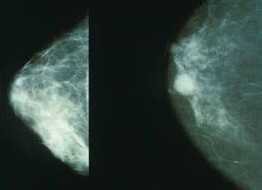NEJM:肿瘤内异质性和分支进化揭示肿瘤的复杂性
2012-05-19 爱唯医学网 爱唯医学网
最近由英国伦敦癌症研究所的Marco Gerlinger博士发表的一项严谨的基因组学研究,进一步强调可以将癌症视为癌细胞的异质性集合,这些癌细胞不断进化,甚至可能以达尔文的方式为争取生存权和发展权而发生竞争,而代价是宿主的健康乃至生命。相关论文由近期的New England Journal of Medicine发表。 当上世纪90年代,主流观点认为癌症的起因是单个细胞的突变(常由烟草或射线暴露

最近由英国伦敦癌症研究所的Marco Gerlinger博士发表的一项严谨的基因组学研究,进一步强调可以将癌症视为癌细胞的异质性集合,这些癌细胞不断进化,甚至可能以达尔文的方式为争取生存权和发展权而发生竞争,而代价是宿主的健康乃至生命。相关论文由近期的New England Journal of Medicine发表。
当上世纪90年代,主流观点认为癌症的起因是单个细胞的突变(常由烟草或射线暴露所致),随着时间推移,这个细胞分裂数百次而发展成一个具有相同恶性的细胞“克隆群”,能够阻止人体免疫和癌症监视系统,最终形成肿瘤。如果任其发展,这一单克隆肿瘤会逐渐扩散到全身,达到手术无法治愈的程度,使细胞毒化疗成为唯一的选择。
这种肿瘤进化的概念主要是围绕肿瘤的生长,以及可增加肿瘤侵袭性的额外突变的获得。肿瘤进展的多步模型暗示我们,癌症本质上是一种单克隆的坏东西,可通过及时的外科治疗加以清除,或采用化疗将其击退。但这种便于医学生理解的过于简单化的模型,近年来已受到质疑,因为针对肿瘤组织的遗传学研究显示,肿瘤比我们原先认为的更有活力和更具有异质性。
Gerlinger博士及其同事检测了4例进展期肾癌患者的原发灶和转移灶标本。在多个时间点进行基因组分析,包括化疗开始之前和癌症进展过程中。基因组分析包括全外显子组测序,或所有已知人类基因的DNA测序(参见“Personalized Genome Around the Corner?”),试图在原发灶转移时和化疗后的新遗传突变中寻找肿瘤进化的迹象。此外,研究者还得以观察同一时间点、同一标本的不同区域,直接寻找旧有概念中的恶性单克隆组织。
研究结果表明,存在基于不同时间点和化疗暴露与否的肿瘤异质性。在1例患者的十多份标本中(其中9份来自手术切除原发灶的不同区域),分析确认了125种基因突变。随后在一个亚组的标本中验证最初的基因组分析结果。
研究者得到了一些有趣的发现:所有活检标本的突变中,大约1/3符合单克隆模型;另有45%的突变为部分肿瘤标本所共有,仅有略多于20%的突变仅存在于单次活检标本中。这意味着,总的来说,检测出的突变多数并非所有肿瘤标本所共有,区域差异在肿瘤中相当普遍。
虽然并非所有突变都可能参与癌症的行为,但这些数据表明一个肿瘤在遗传方面是不均匀的,特定的肿瘤区域具有独特的遗传特性。或许有些突变仅存在于若干个甚至单个细胞中,尽管本项研究未能达到如此高的采样细致度。
有趣的是,某些突变似乎出现1次以上,随着肿瘤进展,这些突变在肿瘤中暂时增加,而这正是一种“趋同进化”(编者注:是指不同的生物,如果生活在条件相同的环境中,有可能产生功能相同或极相似的形态结构,以适应相同的条件)的表现。这提示我们,多样的自然选择压力——或许包括化疗暴露——使得肿瘤在达尔文式选择过程中发生有利于自身生长和繁殖的适应性改变。
肿瘤内部存在异质性和“达尔文式致癌”的事实,需要我们严肃对待。这意味着不仅每例患者的每个肿瘤都具有独特的基质,而且还是多个独特的癌细胞群体的集合。
就像DNA指纹显示每个人(除了同卵双胞胎)都具有独特的基因那样,这些肿瘤数据表明,每个癌症也是独一无二的,甚至同一个人的同一个癌症也在不断进化。这种变异可能解释为何化疗并不是总能根治肿瘤。此外,这些数据还带来了一个问题,即如何针对具有异质性且不断进化的处于活动状态的肿瘤制定个性化的治疗方案。
正如研究者所说的,只有量化和理解这种变化,才能更好地了解癌症预后和发展新的治疗策略。

doi:
PMC:
PMID: 22397650
Intratumor Heterogeneity and Branched Evolution Revealed by Multiregion Sequencing
Marco Gerlinger, M.D., Andrew J. Rowan, B.Sc., Stuart Horswell, M.Math., James Larkin, M.D., Ph.D., David Endesfelder, Dip.Math., Eva Gronroos, Ph.D., Pierre Martinez, Ph.D., Nicholas Matthews, B.Sc., Aengus Stewart, M.Sc., Patrick Tarpey, Ph.D., Ignacio Varela, Ph.D., Benjamin Phillimore, B.Sc., Sharmin Begum, M.Sc., Neil Q. McDonald, Ph.D., Adam Butler, B.Sc., David Jones, M.Sc., Keiran Raine, M.Sc., Calli Latimer, B.Sc., Claudio R. Santos, Ph.D., Mahrokh Nohadani, H.N.C., Aron C. Eklund, Ph.D., Bradley Spencer-Dene, Ph.D., Graham Clark, B.Sc., Lisa Pickering, M.D., Ph.D., Gordon Stamp, M.D., Martin Gore, M.D., Ph.D., Zoltan Szallasi, M.D., Julian Downward, Ph.D., P. Andrew Futreal, Ph.D., and Charles Swanton, M.D., Ph.D.
Background
Intratumor heterogeneity may foster tumor evolution and adaptation and hinder personalized-medicine strategies that depend on results from single tumor-biopsy samples.
Methods
To examine intratumor heterogeneity, we performed exome sequencing, chromosome aberration analysis, and ploidy profiling on multiple spatially separated samples obtained from primary renal carcinomas and associated metastatic sites. We characterized the consequences of intratumor heterogeneity using immunohistochemical analysis, mutation functional analysis, and profiling of messenger RNA expression.
Results
Phylogenetic reconstruction revealed branched evolutionary tumor growth, with 63 to 69% of all somatic mutations not detectable across every tumor region. Intratumor heterogeneity was observed for a mutation within an autoinhibitory domain of the mammalian target of rapamycin (mTOR) kinase, correlating with S6 and 4EBP phosphorylation in vivo and constitutive activation of mTOR kinase activity in vitro. Mutational intratumor heterogeneity was seen for multiple tumor-suppressor genes converging on loss of function; SETD2, PTEN, and KDM5C underwent multiple distinct and spatially separated inactivating mutations within a single tumor, suggesting convergent phenotypic evolution. Gene-expression signatures of good and poor prognosis were detected in different regions of the same tumor. Allelic composition and ploidy profiling analysis revealed extensive intratumor heterogeneity, with 26 of 30 tumor samples from four tumors harboring divergent allelic-imbalance profiles and with ploidy heterogeneity in two of four tumors.
Conclusions
Intratumor heterogeneity can lead to underestimation of the tumor genomics landscape portrayed from single tumor-biopsy samples and may present major challenges to personalized-medicine and biomarker development. Intratumor heterogeneity, associated with heterogeneous protein function, may foster tumor adaptation and therapeutic failure through Darwinian selection. (Funded by the Medical Research Council and others.)
Supported by grants from the Medical Research Council, Cancer Research UK, the Royal Marsden Hospital Renal Research Fund, Novartis, EU Framework 7 Personalized RNA Interference to Enhance the Delivery of Individualized Cytotoxic and Targeted Therapeutics (PREDICT), and the Wellcome Trust (to Dr. Futreal).
This article is dedicated to Tim Christmas.
Disclosure forms provided by the authors are available with the full text of this article at NEJM.org.
Drs. Gerlinger, Larkin, Gronroos, Martinez, and Swanton and Mr. Rowan, Mr. Horswell, Mr. Endesfelder, Mr. Matthews, and Mr. Stewart contributed equally to this article.
We thank the patients; Nasir Khan, Isobelle Coombes, Kim Edmonds, Amy Thomas, Jade Griffiths, Phil Clarke, Maggie James, and Peter Campbell; and the U.K. National Institute for Health Research.
本网站所有内容来源注明为“梅斯医学”或“MedSci原创”的文字、图片和音视频资料,版权均属于梅斯医学所有。非经授权,任何媒体、网站或个人不得转载,授权转载时须注明来源为“梅斯医学”。其它来源的文章系转载文章,或“梅斯号”自媒体发布的文章,仅系出于传递更多信息之目的,本站仅负责审核内容合规,其内容不代表本站立场,本站不负责内容的准确性和版权。如果存在侵权、或不希望被转载的媒体或个人可与我们联系,我们将立即进行删除处理。
在此留言














#复杂性#
71